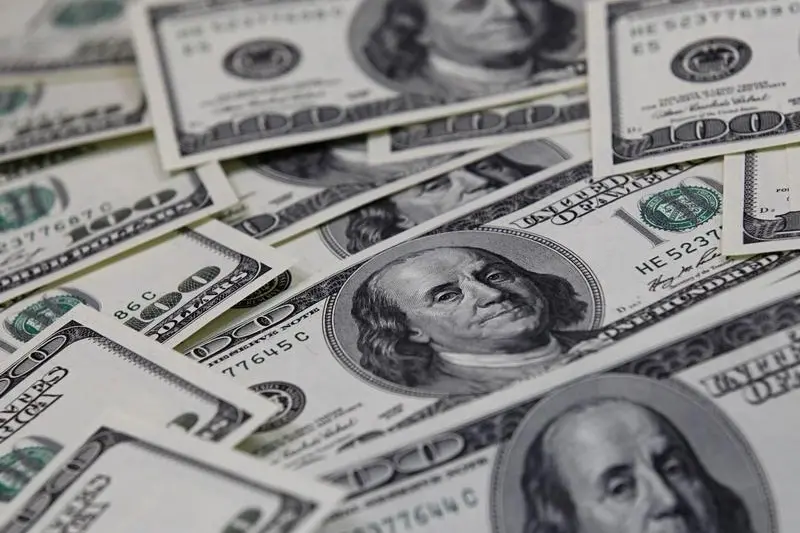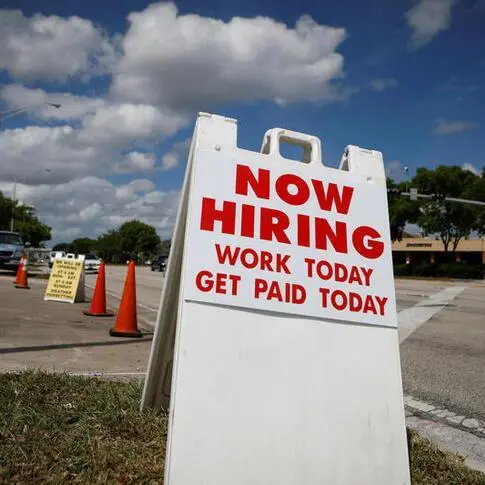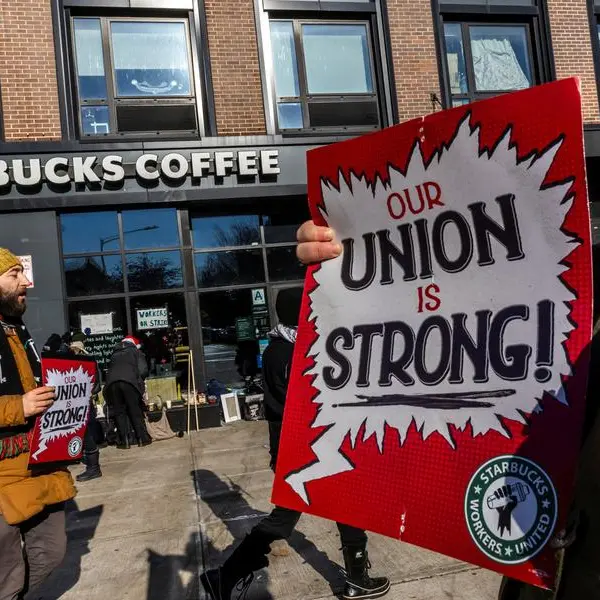PHOTO
Price cuts by major U.S. retailers and new data showing a slowdown in consumer spending may boost the Federal Reserve's confidence in falling inflation and take the edge off of corporate profits that have grabbed a larger share of national income since the start of the COVID-19 pandemic.
Adjusted for inflation both overall consumption and disposable income dropped slightly in April. The Commerce Department had reported on Thursday that the U.S. economy grew more slowly than initially thought over the first three months of the year largely because of a lowered pace of consumption, a core prop of the economy that Fed officials feel needs to cool for inflation to return to the central bank's 2% target.
Inflation data released on Friday showed the personal consumption expenditures price index rose at a 2.7% annual rate in April, matching the gain in March. The Fed uses PCE inflation to set its 2% inflation target, while the "core" index stripped of volatile food and energy prices rose 2.8%, also the same as the month before.
Policymakers have been worried that progress back towards the central bank's inflation target may have stalled after a steady decline from the peak above 7% in June 2022.
But while the headline numbers pointed to another lost month, there were signs of change. Core prices rose less than expected on a month-to-month basis, and the twin declines in "real" consumption and income confirmed the sense of an economy easing gradually back from a period of fast growth and price increases.
"While American household balance sheets remain solid in our opinion, the margin for discretionary spending has been much thinner," said Tuan Nguyen, an economist at RSM US, an observation that matched new data showing spending had slowed for things like recreational goods as consumers spent more for housing and utilities.
"More likely than not, the economy is cooling down to a soft landing, which gives the Fed a reason to rethink its hawkish stance on keeping interest rates at a multi-decade high level ... If we get more data like this in the coming months ... we think the Fed should act sooner rather than later," he wrote in an analysis of the new inflation and consumption report.
The U.S. central bank is expected at its June 11-12 policy meeting to keep its benchmark interest rate steady in the 5.25%-5.50% range, where it has been since last July. Fed officials say the next move on rates will likely be to lower them, but not until they feel assured inflation will resume its decline to 2%.
Investors expect an initial rate cut at the Fed's September meeting, though by a slim margin.
Policymakers themselves have been reluctant to commit, typically noting that as long as the job market and the economy overall remain healthy there's no rush to lower interest rates, particular with aspects of inflation still troubling them.
Some policymakers, for example, have looked beyond the headline inflation number to the share of goods and services where price increases still exceed 3% annually. In April, that remained around 55%, roughly double what it was before the COVID-19 pandemic.
LANDSCAPE SHIFT
Change may be coming.
High-profile retailers like Target and Walmart have been cutting prices for food and other staples, with Walgreens this week saying in a price-cut announcement that the company "understands our customers are under financial strain."
Fed officials have said they feel consumers are in broadly good shape, with unemployment low and wages rising. But they've also noted signs of stress among lower-income households, including rising loan default rates and credit card borrowing.
The price cuts announced this month may show that same sense developing in corporate executive suites and touching off the sort of dynamic Fed policymakers have anticipated: A fight for market share as pandemic-era pricing power wanes, along with the elevated profits that followed it.
The data released by the Commerce Department on Thursday showed that even though earnings fell slightly, corporate profits continued to take an elevated share of the income earned by all workers and businesses combined.
Corporations' share of income climbed during the pandemic as snarled supply chains and pandemic-era transfer payments to individuals left home-bound consumers with money to spend on goods that had become scarce - a recipe for price hikes and higher margins. When pandemic restrictions were lifted and in-person events resumed, that surplus purchasing power shifted to travel, restaurants and other services - and inflation spiked there as well.
Fed officials in recent weeks have said they think the landscape has shifted, with businesses generally saying their capacity to raise prices is diminished compared to the last two years. In the Fed's most recent "Beige Book" collection of anecdotes about the economy, there was a widespread sense of consumers becoming more selective and putting pressure on firms.
"Consumers are becoming more price-conscious, likely putting pressure on profit margins. We should expect more discounts and incentives as some consumers struggle with persistently high prices," Jeffrey Roach, the chief economist at LPL Financial, said after the release of the Fed report.
(Reporting by Howard Schneider; Editing by Dan Burns and Paul Simao)























